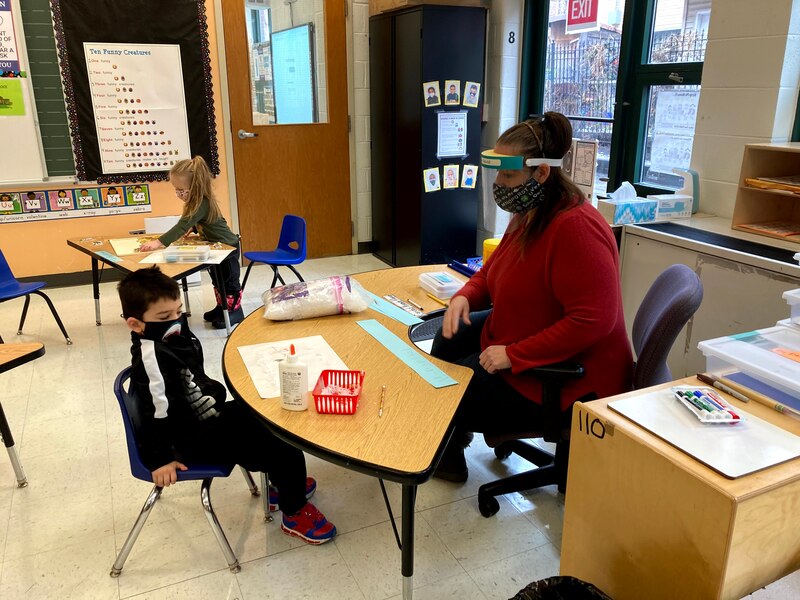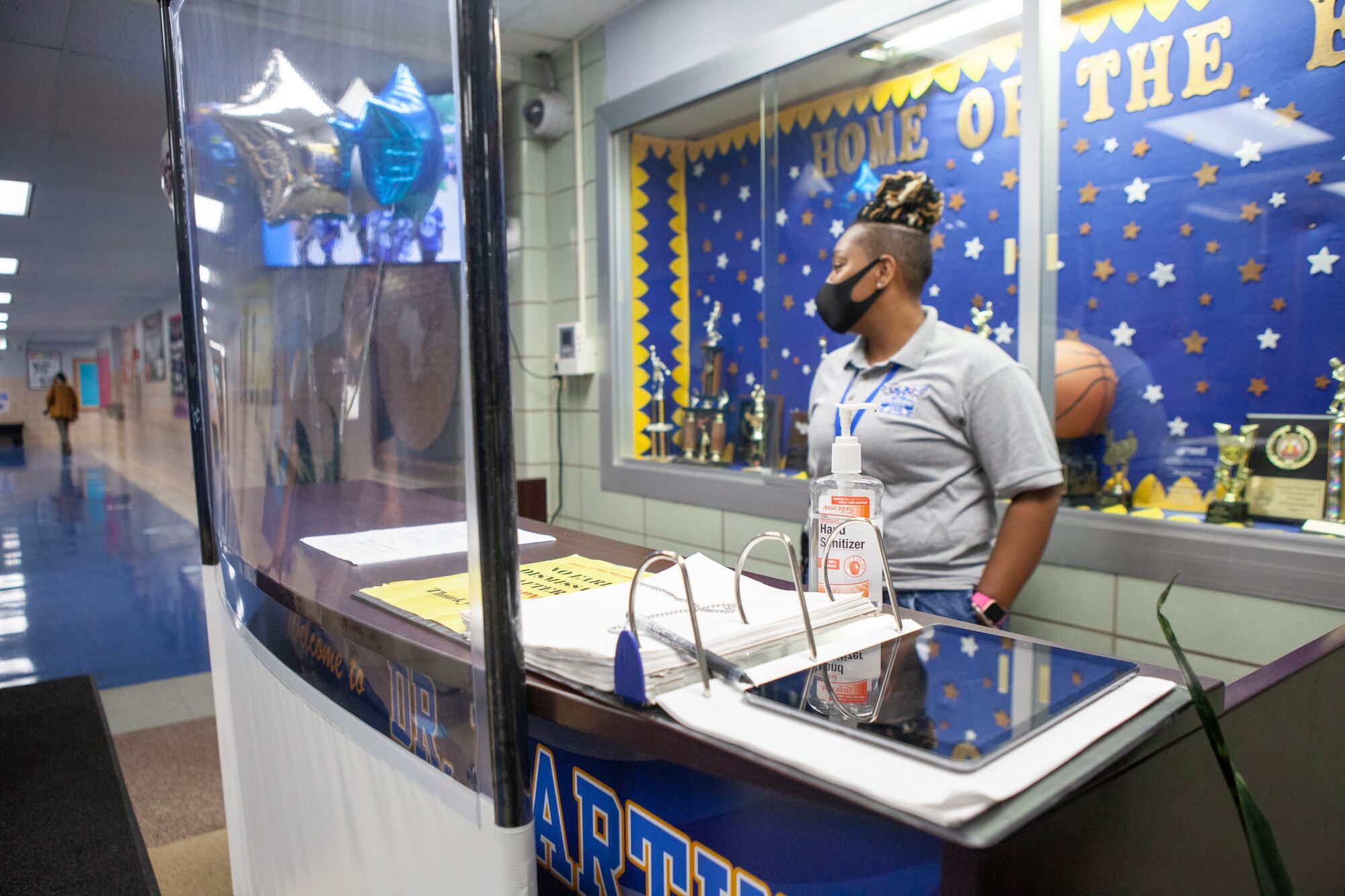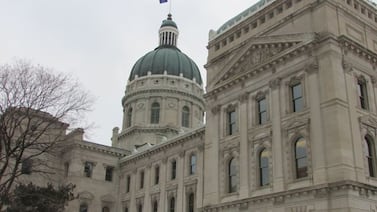The federal government is funneling billions in COVID relief funding to help school districts respond and recover from the pandemic. In Chicago, new documents show, the district will use a hefty portion of that money on pay and benefits for thousands of teachers, lunchroom workers, and other staff already on the payroll.
Chicago is slated to put more of its federal pandemic dollars into footing the bill for pre-existing staff and programs than some other large Illinois districts. District officials say this spending is preventing disruptive layoffs and freeing up other resources that allowed it to boost how much campuses got per pupil for their budgets this school year.
CPS also plans to spend a chunk of the $1.8 billion in federal stimulus it received from the last funding round on new or improved after-school, summer school, tutoring, mental health and other programs. The spending plan it submitted to the state — the most detailed to date and obtained by Chalkbeat through a public records request — offers new insight into how the district proposes to make use of the money over the next two-and-a-half years.
The district’s recently approved application for the American Rescue Plan, the third infusion in federal pandemic recovery dollars for schools and by far the largest, doesn’t offer an exhaustive picture: The state’s form makes it hard at times to tell apart spending on existing programs and new efforts, and includes some sweeping catchall categories. Adding up three federal relief packages for schools, Chicago received almost $2.8 billion.
Districts across the country are trying to strike a balance between using the federal dollars to shore up their budgets and addressing the many student academic and mental health needs brought on by the pandemic. Experts say many districts are rightfully reluctant to make new hires and launch new programs with the money, which needs to be spent by the fall of 2024.
“I would never expect a district to hire new people with temporary money from the feds,” said Lori Taylor, a school finance expert at Texas A&M University. “It’s not prudent to make a long-term commitment using short-term money.”
Still, investing heavily in warding off layoffs and other budget cuts can set districts up for a fiscal cliff as well. And some experts say that while extremely flexible spending guidelines from the federal government allow districts to spend on existing staff and programs, that could go against the spirit of the law: responding to the immediate needs brought on by the pandemic.
Personnel costs loom large in CPS plan
In Chicago’s application to the state for the funding from the American Rescue Plan, also known as the third installment of Elementary and Secondary School Emergency Relief, or ESSER, staffing is clearly a big-ticket item. One catch is that the state’s form asks districts to list staff “created or retained” with the federal dollars, sometimes making it tough to say where the planned spending for existing employees ends and new hiring begins.
Overall, CPS plans to cover 11,312 existing and new employees, almost 30% of the district’s workforce. That’s roughly 56% of the district’s grant going to salaries and benefits, which include pensions, unemployment, and workers compensation coverage.
The bulk of that is paying for existing instructional positions. Between salaries and benefits for 4,524 such positions, the district is earmarking almost $517 million of ESSER III money to keep these teachers on. In a publicly released plan last summer, the district had said it would spend $247 million of that money on preserving school-based instructional positions. But that smaller amount did not include positions that schools cover out of their own flexible “learning loss” allocations and some included in a programmatic bucket in that original plan, the district said.
Separately, Chicago also included almost $450 million for salaries and benefits to cover 3,080 instructional positions in its ESSER II application, which the state approved this past fall — nearly 83% of the district’s roughly half a billion ESSER II allocation.
These numbers far exceed those for teachers and staff who have received layoff notices in recent years — employees the majority of whom the district eventually rehires.
In the American Rescue Plan application, Chicago’s early childhood learning program, which in previous years has been powered with dollars from the state, is another big-ticket item. The district is spending more than $100 million in salaries and benefits for about 600 teachers and 475 teaching assistants, also largely existing positions.
Chicago has grappled with steep declines in its pre-K enrollment, but officials have said they are forging ahead with a plan to offer each child a seat in the program — and the federal dollars are allowing them to pick up the pace, covering some new positions.
The money will also underwrite pay and benefits for:
- about 2,400 nutrition worker and 740 crossing guard positions, largely existing positions
- roughly 320 school nurse and 528 social worker positions, some already on staff and some newly hired in keeping with the district’s commitment to staff a nurse and a social worker in each of its campuses, enshrined in its 2019 contract with the Chicago Teachers Union
- the district originally included 320 school nurse positions in the plan but eventually decided to cover them with other federal funds
- 64 additional counselors and 20 student promotion coordinators, all new positions to be created this school year and next
CPS is also putting about $12 million toward its school breakfast and lunch contracts with Aramark and Heartland. It is investing about $51 million for additional pay for staff and substitutes to accommodate small-group instruction, interventions for students with disabilities and English learners, before and after-school and summer programs, and more.
Aside from staffing expenses, some of the biggest price tags are attached to broad catchall items on the district’s spending plan list. Some of them are also likely ongoing expenditures that precede the pandemic though that’s hard to gauge without a more detailed breakdown.
One such item — the second most expensive after salaries for retained instructional positions — includes $130 million on planned spending for:
- instructional licenses, materials, and fees
- the district’s new tutor corps
- the previously planned rollout of the district’s Skyline universal curriculum
- a slew of contracts with vendors providing social-emotional learning and enrichment programs, some of which already work with the district
Another large category features supplies and materials, from computers to science experiment kits to pens and pencils, for a total of $100 million.
The district said the plan in the application gives it flexibility to respond to evolving needs at the school and district level in the next couple of years.
“CPS is focused on using this funding to provide students with the resources they need to successfully complete a high-quality education and succeed in the future,” the district said in its statement, adding, “The application is built to preserve existing positions and also make sure we have the authority to create new ones.”
The district did not make a finance official available for an interview, but provided detailed responses to questions in writing.
Chicago earmarks 30% of funds for learning loss

Chicago noted that it’s also using the money to power its full-time in-person reopening and address the mental health, academic, and other needs heightened by the pandemic.
The district categorized about $525 million, or almost 30%, of its planned spending as resources to address learning loss, to which districts were required to dedicate at least 20% of their American Rescue Plan allocations.
Largely under the banner of the district’s two-year “Moving Forward Together” initiative, that amount includes about $215 million for summer programs and enrichment, $125 million for after-school programs, $107 million for extended day expenses, and $76 million for social and emotional learning and student engagement. More than $33.5 million was earmarked for COVID mitigation measures (not including air quality upgrade projects), such as expenses for testing, contact tracing and care rooms, where students who show symptoms during the school day can wait for parent pickup.
The state approved the district’s ESSER III application in December after some back and forth in the preceding months, based on correspondence between the district and board obtained by Chalkbeat Chicago. CPS redacted portions of these emails that outline the revisions the district was required to make as well as the reasons why it sought expedited approval.
In a survey conducted by the state’s school business official association, about half of Illinois districts said they had to tweak their ESSER applications before the state signed off on them.
On a virtual panel on the COVID relief funding this week, Krish Mohip, deputy education officer at the Illinois State Board of Education, said the state sometimes pushed districts to better explain how proposed expenses tie to needs created by the pandemic, nixing some such as the replacement of an entire school bus fleet.
“That’s not responding to COVID,” Mohip said. “That’s just you trying to use the ESSER funding to pay for something you normally have to pay for.”
Other Illinois districts to spend big on facilities, academic overhaul
Shoring up existing programs and investing in the retention of existing staff are allowed expenses under the federal law, said Bree Dusseault of the nonprofit Center on Reinventing Public Education, which has been tracking district ESSER spending and pandemic recovery efforts. So far, because spending data is still limited and varies significantly from state to state, it’s difficult to say how broadly this type of spending is happening nationally.
In some cases, warding off the disruption from staff layoffs and program cuts might be the best use of dollars to help students, Dusseault said. With already declining public school enrollment taking a steeper dive during the pandemic, she said, “If the ESSER funds weren’t in place, districts would be making staff cuts. The funds were unrestricted so districts could do what they needed to do.”
Still, she said, districts must strike a balance between backfilling — and creatively addressing the needs of this unprecedented moment for education.
“The money isn’t given to plug enrollment-driven budget holes,” she said. “It’s to be put in places that best serve students.”
Taylor at Texas A&M University said given the risks of extensive new hiring with temporary money, districts have somewhat limited spending options: existing personnel, one-time purchases such as curriculums or technology upgrades, and “shovel-ready” programs or projects — initiatives that were already in the works. Districts such as Chicago should be transparent about how they are using any money freed up thanks to the federal windfall — or any of the federal money they are unable to spend as planned because of hiring or supply chain challenges.
“Bureaucracies love to have discretionary funds,” Taylor said. “Sometimes, they make decisions with those discretionary funds that aren’t aligned with what the taxpayer might want them to do.”
Other large Illinois districts also tried to strike that balance between maintaining what was already in their budgets and forging new ground.
Springfield is using about $15 million of its almost $70 million in American Rescue Plan dollars on retaining employees over three years, a move the district said would allow it to avoid any layoffs during that time.
The district is also investing into a grow-your-own-educators partnerships with two universities, where it will cover tuition and other expenses for support staff members who are seeking to become teachers — an effort the district says will also help it achieve a more diverse educator workforce. State officials such as Mohip praised that program as an example of a proactive approach to staffing challenges. (CPS launched its own version of a grow-your-own teacher residency program in 2018)
In Elgin, the state’s second largest district, a significant portion of the money will go toward a sweeping initiative called U-46 Rising. The initiative aims to promote academic teams in all school buildings and empower principals to serve as instructional leaders. It involves an investment in professional development and some additional hiring. Separately, the district is hiring 28 elementary teachers in a bid to lower class sizes.
“Our intent is to take these resources and use them to transform our system for the long run,” said Superintendent Tony Sanders. “If we exit this stretch looking the same as we did before the pandemic, we will have failed.”
In Peoria, the big-ticket items are roofing and other facility repairs, furniture, and technology upgrades. The district also plans to install security cameras in buildings and on school buses, saying in its public plan that the goal is to monitor whether students are wearing masks properly. It will update outdated curriculums and textbooks and upgrade some buses and driver’s education cars.
Superintendent Sharon Desmoulin-Kherat said that she looks at this spending as “leveling the playing field” for students in an under-resourced district with a relatively high low-income population. The district is also expanding some existing programs, including tutoring and summer programs.
Said Michael Jacoby, the head of the Illinois Association of School Business Officials, “Districts are trying to avoid expenses that go into the future — trying to creatively utilize those resources without going off a cliff.”







